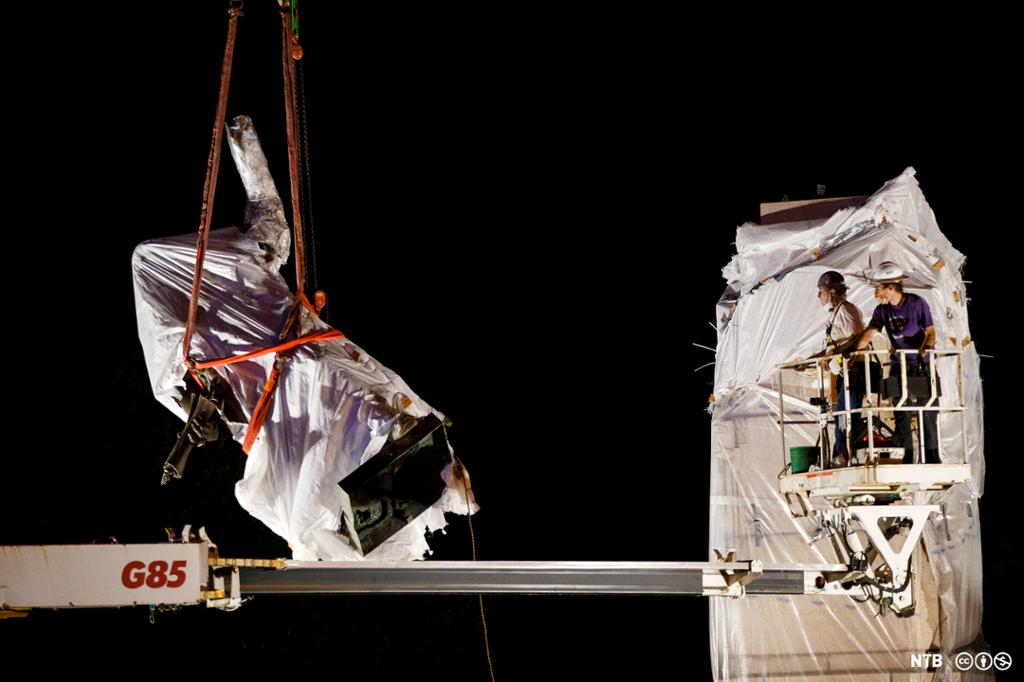Toppling Statues

The Black Lives Matter movement started in 2013 after Trayvon Martin, an African American teenager was shot while walking to a family friend's house. George Zimmerman, who shot him, was acquitted. The Black Lives Matter movement started as a hashtag and grew into a global movement. In 2020, several examples of police brutality sparked large Black Lives Matter protests in the United States.
During these protests, statues of people with links to slavery, Confederate statues and memorials, and statues of Columbus were targeted. These statues were targeted because of their link to the oppression of African Americans and Native Americans. In addition, some Black Lives Matter protesters vandalised Christian sculptures and symbols, believing that there is a connection between the oppression of black people and the Christian Right in the United States.
Protests and vandalism of statues spread to other countries as well. Especially statues of people who had some association with slavery or the slave trade were targeted. These protests sparked debate: Is it right to remove and hide away reminders of a past we are no longer proud of? Based on what criteria do we decide which monuments have to go and which should stay?

In 1865 slavery was officially abolished in all of the United States. The Civil War was over. The Northern States had defeated the Southern States. The Union had defeated the Confederacy. Slavery had been central issue of the Civil War. Now the slaves were free, but what status would they have when the war was over? Would the government live up to the creed “we hold these truths to be self-evident, that all men are created equal” as was stated so eloquently in the United States Declaration of Independence?
What actually happened was that slavery was replaced by a new oppressive system: segregation, based on the separate but equal doctrine. The separate but equal doctrine stated that for as long as goods and services were provided for both black and white citizens, it was OK to segregate services, facilities, public accommodations, housing, medical care, education, employment, and transportation by race. The doctrine was a result of the Supreme Court ruling Plessy versus Ferguson in 1893, where the U.S. Supreme Court ruled that segregation did not violate the Constitution.
In the years following the Civil War a number of statues and monuments were erected commemorating leaders who fought in support of slavery. Statues and memorials to the Confederation were erected all over the South. In part, the message of these memorials was: "We may have lost the war, but we haven’t stopped believing in the cause". The Confederate flag continued to wave over public buildings in the South. Even after the Civil Rights Movement led to legislation ensuring equal rights for all U.S. citizens, these symbols of slavery and oppression were kept on display throughout the South.
The Black Lives Matter campaign has found support in many countries around the world. The idea of vandalising and tearing down monuments and statues has also spread. For example, a statue of Winston Churchill was vandalised during a protest in London. The words "was a racist" was sprayed under Churchill's name. In Norway a statue of the author Ludvig Holberg was criticised because Holberg allegedly invested in a company involved in the slave trade.
For some people sculptures are a part of a shared cultural history; they are reminders of the past and they are works of art, and vandalising them is a blow against both culture and identity.
Critics of this form of protest feel that judging the past through the eyes of the present will always be problematic. Condemning a person based on the social mores of the present, rather than those of their own time shows a lack of understanding of history and how societies develop. It is also difficult to determine a cut-off point for this outrage: What reminders of the past should be removed, and which should be kept?
In the United States there are symbols and monuments that were put up in part to illustrate white superiority, and it might be argued that getting rid of these symbols is no different than countries in Eastern Europe getting rid of reminders of Soviet domination after the Cold War.
Toppling these monuments is a way to express the notion that things still need to change. If society really has moved forwards, and racism is a thing of the past, why are these monuments still there? The act of destroying or removing a statue is seen as a way to remove a constant reminder of the wrongs that were committed in the past and paving the way for more inclusive monuments in the future.
Relatert innhold
An article discussing the existence and the consequences of structural racism.